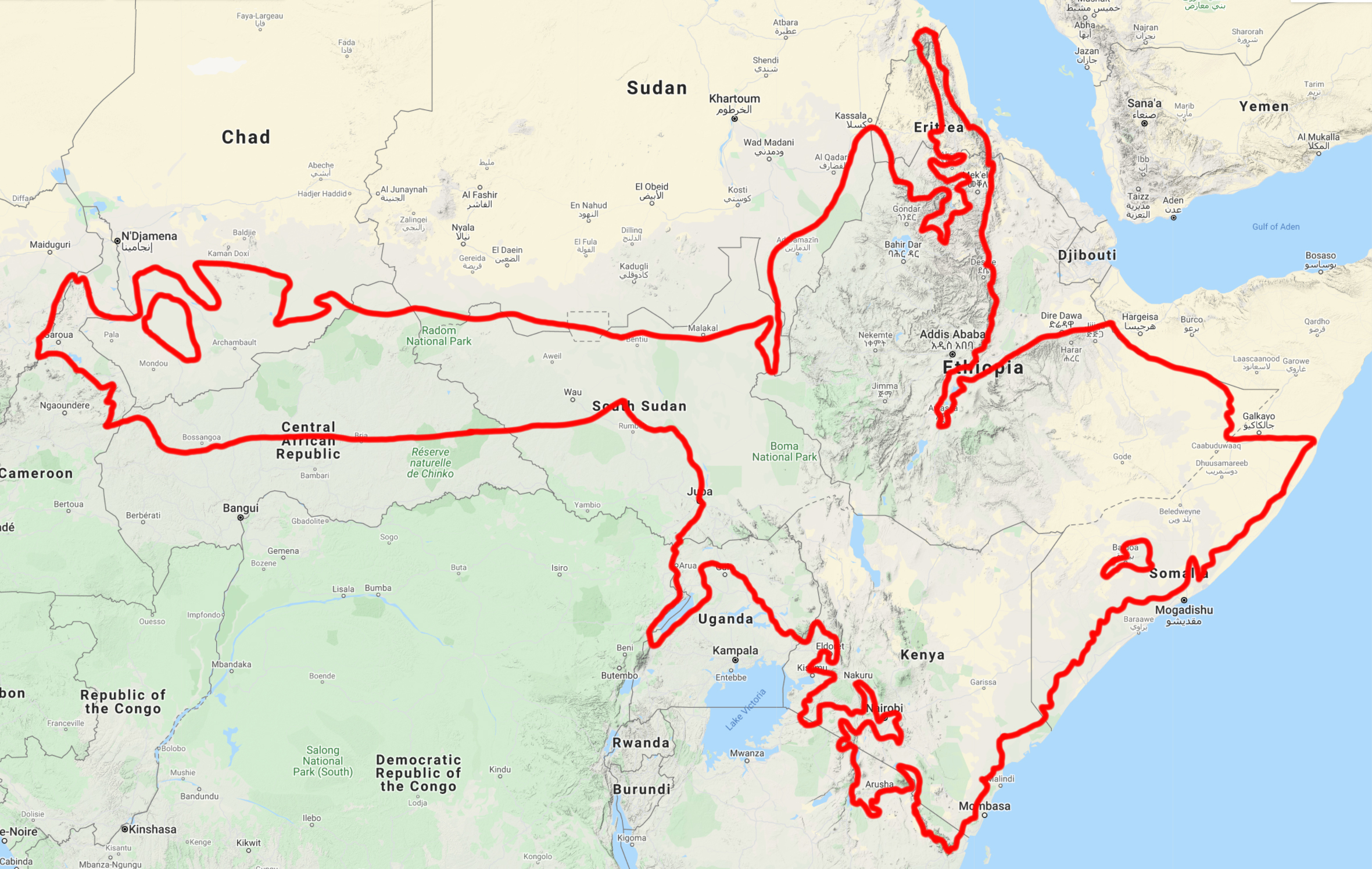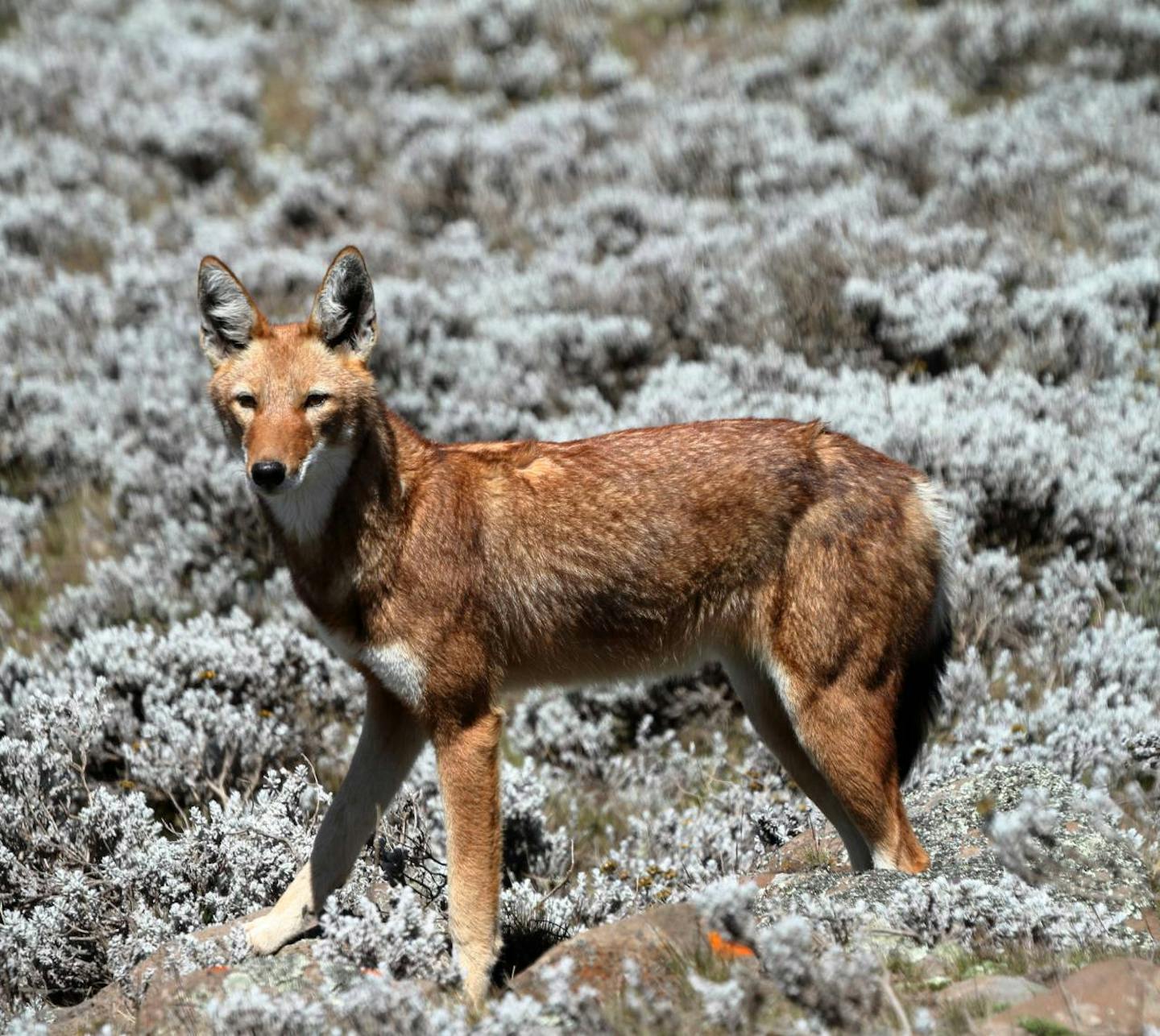The Ethiopian wolf: meet Africa's fascinating most endangered carnivore
One Earth's “Species of the Week” series highlights the flagship species of each of the 844 unique ecoregions contained within Earth’s bioregions.
Africa's most endangered carnivore goes by many names. In Amharic, it goes by walgie (“trickster”) or ky kebero (“red jackal”). The Oromo people call it the jeedala fardaa (“horse's jackal”) for the reported habit of following livestock about to give birth. In English, Simien fox and the Simien jackal are two alternatives for the Ethiopian wolf.
Regardless of labels, this species has awed many who venture into the rugged highlands of Ethiopia.

The Ethiopian wolf is the flagship species of the Ethiopian Montane Forests ecoregion, located in the Lake Turkana-Sudd Grasslands, Bushlands & Forests bioregion (AT21).
The first account of the Ethiopian wolf dates back to the third century, Gaius Julius Solinus’ The Wonders of the World. Solinus writes, “A characteristic of Ethiopian wolves is that they leap so high that they seem to have wings, going further than they would by running.”
Ethiopian wolves are long-limbed and have a slender build similar to coyotes. Like the American red fox, they have a tawny-red coat paired with a black, bushy tail that can reach up to 16 inches in length. With their lanky features, the wolves are able to maximize their pounce while hunting.
Primary prey of the Ethiopian wolves include big-headed African mole-rats, grass rats, black-clawed brush-furred rats, highland hares, and sometimes goslings and eggs. Sedge leaves have occasionally been found in their stomachs, which is hypothesized by zoologists as either for additional fiber or for parasite control.
.jpg)
Close up of two rare and endangered Ethiopian wolves Canis simensis lying on grass, Bale mountains, Ethiopia
Despite the Oromo people’s claims, the wolves typically pose no threat to livestock with ranchers often leaving herds unattended in the region.
Ethiopian wolves are social animals living in family groups as large as twenty adults. The breeding female leads the group consisting of her young, dispersing males, and reproductively suppressed females. Using protection in numbers, they sleep together in the open at night and only use dens for nursing pups. Mating season takes place between August and November with the male courting the female by following her closely and waiting for consent.
Gestation lasts around sixty days and litters of two to six pups are born between October and December. Highly territorial, the species aggressively interacts and vocalizes with rival packs and has been spotted performing “border patrols” at dawn, noon, and evening.
With no recent record of the species occurring below 10,000 feet below sea level, the Ethiopian wolves' only known habitats are seven small isolated enclaves in the country’s highlands. The largest population can be found in the Bale Mountains in southern Ethiopia with 120 to 160 wolves — more than half the total population.
.jpg)
Group of Ethiopian wolves in the highlands of Bale mountains, Ethiopia.
As humans impinge into the area with road construction and settlements, packs’ territories are being pushed closer together creating food scarcity, disease transference and interbreeding from free-range dogs.
Conservation efforts are headed by Oxford University's Ethiopian Wolf Conservation Programme, which seeks to protect wolves through vaccination and community awareness programs. The species is currently listed as endangered and on the IUCN’s Red List of Threatened Species.
Interested in learning more about the bioregions of the Afrotropics? Use One Earth's interactive Navigator to explore bioregions around the world.
Launch Bioregion Navigator


